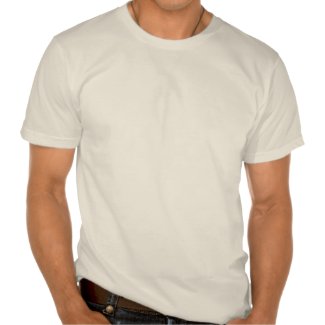 I don't really make a big secret out of my dislike of 1950s cinema. To me it represents the decline of the Golden Age, the point at which television and independent producers eclipsed the Studio System. The stars didn't exactly fall down, but they started to sag a bit as they aged. Male stars were paired with a succession of younger and younger female co-stars, while female stars like Crawford, Stanwyck and Davis, were transitioned to playing "character" parts.
I don't really make a big secret out of my dislike of 1950s cinema. To me it represents the decline of the Golden Age, the point at which television and independent producers eclipsed the Studio System. The stars didn't exactly fall down, but they started to sag a bit as they aged. Male stars were paired with a succession of younger and younger female co-stars, while female stars like Crawford, Stanwyck and Davis, were transitioned to playing "character" parts.I once was commissioned to write a coffee table book on Grace Kelly, the quintessential Fifties actress. While I love Kelly, it forced me to watch a lot of movies from that decade that I might have skipped. Maybe that is where my 50s ambivalence began. I'm not sure. Some of the less than bouyant feelings about the decade may stem from the dark undercurrent of McCarthyism that pervades my view of the decade. It's come to poison my love of some of the great filmmakers of the era, like Elia Kazan. It doesn't help either, that the decade's big icons: James Dean, Marilyn Monroe, Marlon Brando and to a lesser degree Elizabeth Taylor are over-exposed beyond belief. And if I'm honest, I'm not too fond of the Method acting style of your Brandos and your Montgomery Clifts either. Cary Grant once denounced the whole scene with the withering recollection "it was the time of blue jeans, dope and the Method. No one cared about comedy."
 Writing a movie blog where I can watch any ding danged thing I want is great, but all this self-indulgence has gotten me stuck in a rut or two. If I really didn't care about when anyone else thought, I'd probably post nothing but naked pictures of Robert Donat. (Please don't email me asking for naked pictures of Robert Donat, they don't exist. I was just trying to make a point. Also, I want to turn up on a google search for "naked pictures of Robert Donat." Whoever is making that kind of search is my kind of wacko.) So this last week, I ventured out of my comfort zone and watched a couple of movies that have been tottering around in my Tivo for a while: A Tale of Two Cities (1958) and South Pacific (1958). That they were both from the same year and happened to film adaptations of stage productions I was involved with in high school were mere coincidences, I assure you. Really I just like Rossano Brazzi and I wanted to find out what this whole fuss over Dirk Bogarde is all about.
Writing a movie blog where I can watch any ding danged thing I want is great, but all this self-indulgence has gotten me stuck in a rut or two. If I really didn't care about when anyone else thought, I'd probably post nothing but naked pictures of Robert Donat. (Please don't email me asking for naked pictures of Robert Donat, they don't exist. I was just trying to make a point. Also, I want to turn up on a google search for "naked pictures of Robert Donat." Whoever is making that kind of search is my kind of wacko.) So this last week, I ventured out of my comfort zone and watched a couple of movies that have been tottering around in my Tivo for a while: A Tale of Two Cities (1958) and South Pacific (1958). That they were both from the same year and happened to film adaptations of stage productions I was involved with in high school were mere coincidences, I assure you. Really I just like Rossano Brazzi and I wanted to find out what this whole fuss over Dirk Bogarde is all about. I haven't watched the 1935 version of A Tale of Two Cities since high school. Our drama teacher assigned it to us, but I think it was fairly forgettable. What he wanted to assign to us was the 1958 version, but it was probably pure unobtanium in 1980s North Dakota. (It's pretty darn hard to find today unless you have Turner or a region-free DVD player.) In its place, he assigned us to watch a production of Sweeney Todd with Jessica Lansbury. Now that I've seen the '58 version of Tale, I get his point. Dickens created grotesque characters, and complicated situations and plots that most film adaptations really fail to capture. Most adaptations barely manage to convey the average Dickens byzantine plot and interpret some of his broader villains. But director Ralph Thomas, known mostly in Britain for directing The Doctor pictures, a series of slight, highly-profitable comedies, unexpectedly turned in one of the most brilliant films of the decade from his or any other country.
I haven't watched the 1935 version of A Tale of Two Cities since high school. Our drama teacher assigned it to us, but I think it was fairly forgettable. What he wanted to assign to us was the 1958 version, but it was probably pure unobtanium in 1980s North Dakota. (It's pretty darn hard to find today unless you have Turner or a region-free DVD player.) In its place, he assigned us to watch a production of Sweeney Todd with Jessica Lansbury. Now that I've seen the '58 version of Tale, I get his point. Dickens created grotesque characters, and complicated situations and plots that most film adaptations really fail to capture. Most adaptations barely manage to convey the average Dickens byzantine plot and interpret some of his broader villains. But director Ralph Thomas, known mostly in Britain for directing The Doctor pictures, a series of slight, highly-profitable comedies, unexpectedly turned in one of the most brilliant films of the decade from his or any other country.One of the things that is immediately apparent is Thomas' subtle direction. Take the scene where Sidney Carlton first sees Lucy Manette. A regular Hollywood director of this era would frame the actress in a big close-up with cheese cloth and a music queue that tips the audience off that, this is the love interest. Thomas treats the scene in a straight-forward way presenting the actress (Dorothy Tuttin) and then a close-up on his actor Dirk Bogarde. What Bogarde can do in a close-up is amazing. It's all there, his attraction, feelings of inadequacy and self-loathing followed quickly by a mask of indifference. In a interview Bogarde credited Thomas' director of photography on that film with teaching him the ins and outs of lighting and working with the camera.
 I love Rosalie Crutchley the actress who plays Madame DeFarge. This is one of Dicken's great villains and she's too often played as a caricature, which she is not. First of all, Crutchley just looks the part. She's beautiful in a very French way but with an underlying hardness that's pretty terrifying. Defarge is an important character because she represents the desire for revenge gone sour. Compare this to Count of Monte Cristo where vengence is justice, pure and uncluttered by emotion. In Tale of Two Cities, the desire for revenge of a French priosner of the Bastille nearly dooms his daughter and unborn grandchild to the guillotine. Madame Defarge is merely the instrument of that desire for revenge, her personal biography is unimpeachable. The aristocratic scum murdered her whole family. They must die down to the last of their line, even if the last of their line is a fetus, yet.
I love Rosalie Crutchley the actress who plays Madame DeFarge. This is one of Dicken's great villains and she's too often played as a caricature, which she is not. First of all, Crutchley just looks the part. She's beautiful in a very French way but with an underlying hardness that's pretty terrifying. Defarge is an important character because she represents the desire for revenge gone sour. Compare this to Count of Monte Cristo where vengence is justice, pure and uncluttered by emotion. In Tale of Two Cities, the desire for revenge of a French priosner of the Bastille nearly dooms his daughter and unborn grandchild to the guillotine. Madame Defarge is merely the instrument of that desire for revenge, her personal biography is unimpeachable. The aristocratic scum murdered her whole family. They must die down to the last of their line, even if the last of their line is a fetus, yet.Dickens point was that in England the civil war had stopped short of destroying the entire aristocracy to the betterment of the country. I think he wanted to warn his countrymen that reform was preferable to the tumbrils. The context of this in the earlier 1930s Hollywood version is easier to see-- voting for Roosevelt was preferable to letting the country go to out and out revolution. In England in the late 50s, though, there were no workhouses and breadlines, industries had been nationalized and the NHS established for a decade. No, the revolution about to happen was a much a quieter one, a decade away and it involved personal freedom rather than that guaranteed by the state. What was needed was a shake-up of stifling "middle class values" and a lack of openness about sex. One can't help but think of Bogarde as a martyr to this real life revolution when a few years later, he made Victim, which was the first positive portrayal of a homosexual in a British film. That he was probably in the closet himself and subject to prison if he were found out, makes his portrayal even braver.
 Bogarde as Syndey Carlton is brimming over with the kind of intensity that still makes women get all squishy when they watch Montgomery Clift and Marlon Brando of this era. He's the bad boy and sooooo full of pain. You just want to reach into the screen and try to fix him, and thereby doom yourself forever to a series of dysfunctional real-life relationships with unfixable badboys who vaguely remind you of them. When he's drunk, which is half the movie, he's teetering on the edge of out of control, but when he's sober, he's frighteningly precise, logical and cold. This is a mysterious combination that perfectly captures Carlton's dillema. A Tale of Two Cities, though it is set during the French Revolution is a Victorian novel. It addresses the Victorian problem of constraint and reserve in the face of passion. Sydney Calton is a drunk who feels like he has nothing to offer Lucy and anyway she's in love with someone else, so why bother? This is Gone with the Wind syndrome all over again. We modern ladies watch and think, duh, who would ever choose the goody, goody over the awesome bad boy? Well, we're not Victorian Ladies so we can't really judge their actions. Bogarde's interpretation cuts past the problem of Victorian manners and makes it about the disease. It's like he crash landed Night of the Iguana into Brief Encounter and came up with this amazing take on the British character. And I thought Herbert Marshall was subtle.
Bogarde as Syndey Carlton is brimming over with the kind of intensity that still makes women get all squishy when they watch Montgomery Clift and Marlon Brando of this era. He's the bad boy and sooooo full of pain. You just want to reach into the screen and try to fix him, and thereby doom yourself forever to a series of dysfunctional real-life relationships with unfixable badboys who vaguely remind you of them. When he's drunk, which is half the movie, he's teetering on the edge of out of control, but when he's sober, he's frighteningly precise, logical and cold. This is a mysterious combination that perfectly captures Carlton's dillema. A Tale of Two Cities, though it is set during the French Revolution is a Victorian novel. It addresses the Victorian problem of constraint and reserve in the face of passion. Sydney Calton is a drunk who feels like he has nothing to offer Lucy and anyway she's in love with someone else, so why bother? This is Gone with the Wind syndrome all over again. We modern ladies watch and think, duh, who would ever choose the goody, goody over the awesome bad boy? Well, we're not Victorian Ladies so we can't really judge their actions. Bogarde's interpretation cuts past the problem of Victorian manners and makes it about the disease. It's like he crash landed Night of the Iguana into Brief Encounter and came up with this amazing take on the British character. And I thought Herbert Marshall was subtle.The rest of the cast is great including a young Donald Pleasance and a pre-Hammer Christopher Lee in villain mode seen here literally running roughshod over the French peasantry. Thomas also uses extras in the film who really look like starving French peasants. He also uses real locations that further add to the gritty realism. As far as I can tell this is the first realistic style costume drama. A few years ago I was blown away by how ground-breaking the 1963 version of Tom Jones was, but Tale is five years earlier and is many ways even earthier. My tiny part in the stage production of Tale of Two Cities was a peasant storming the Bastille. I climbed out of a hole in the floor and screamed "Viva La France!!!!" before heading into the smoke effects to behead aristocrats off-stage. So naturally, I waited anxiously for these scenes in the film. The crowd scenes are so good they kind of scared me a little bit. I used to think it would be cool to be part of the French Revolution, but woah, man, now I'm not so sure. "Viva la France?"
Since this is rapidly turning into my longest post ever, I'll move on to South Pacific. This is a musical I'm well familiar with and I'm almost positive I've seen the film before, but, really I completely forgot how wonderfully and utterly gay it is. I know it's a musical, but I somehow blocked out that the first 20 minutes of the movie is a bunch of buff shirtless dudes in sailor pants singing about "dames." Add the cross-dressing number "Honeybun" and a storyline that addresses bigotry and you've got to admit that South Pacific is a contender for the title of Gayest Musical Ever. And oh man, I heart it so hard.
The Rogers and Hammerstein score is brilliant, almost every song is a classic. Only Some Enchanted Evening is a little cheesy and that's because it's such a familiar song to us. Rosanno Brazzi was probably chosen for his acting more than his singing,but when he sings, "once you have found her, never let her go" while watching Mitzi Gaynor racing down his long driveway, I cried like a baby.
 The film looks amazing. The copy I taped from TCM was really crisp, with gorgeous colors. I understand the Bluray is to die for and is maybe the one movie that might actually convert me to that technology. Not content with the exotic locals and saturated blues and greens of the South Pacific, the filmmakers took a stagey approach to the photography adding in colored filters to depict different moods in the film. The trippy, Bali Hai is probably the first instance of psychadelia in a main stream movie. On stage, this may have been a humdrum special effect but in a movie of this time, it seems ground-breaking.
The film looks amazing. The copy I taped from TCM was really crisp, with gorgeous colors. I understand the Bluray is to die for and is maybe the one movie that might actually convert me to that technology. Not content with the exotic locals and saturated blues and greens of the South Pacific, the filmmakers took a stagey approach to the photography adding in colored filters to depict different moods in the film. The trippy, Bali Hai is probably the first instance of psychadelia in a main stream movie. On stage, this may have been a humdrum special effect but in a movie of this time, it seems ground-breaking.A special thanks to DVD Beaver and Silents and Talkies whose photos were plundered for this post. Such pretty pics. It's hard not to want to want to spread em around.





3 comments:
I'll heart you forever now, Nipper.
I'll post a bit later on my take on SP, but I saw the remastered 70 mm in Austin last year -- I couldn't stop gushing about it -- and finally watched the remastered DVD that I'd bought at home.
I'll have to get ahold of the blu-ray and compare.
However, I saw detail in the 70mm, and also at home, that I'd never seen in the years I have watched that movie... countless times....
Oh, how I love the song You've Got to Be Taught.
If you didn't watch the commentary on SP, you need to. And I've done a bit of researching on Brazzi -- it was not his voice. I was absolutely disheartened when I found out. Giorgio Tozzi was the singer's name.
John Kerr was dubbed, no surprise.
But Stewpot's dubbing singer was the funniest bit of trivia you'll come up with.... I'll leave it to your other bloggers to see if they know.
Yes! I love the coloured scenes in SP. SO GOOD! Nngh. Sorry. Thinking about its gorgeousness kind of breaks my brain.
-Andi x
Thanks for the heads up "Beaky" on Brazzi being dubbed. (How, I love the "edit" button.) I should have known to double check all my research when it comes to talking about musicals. I love them, but I'm no expert by any stretch.
Andi, I know what you mean. This is one movie I have to try to see in on a big screen eventually. Imagine what would happen if I watched Avatar. I'd probably have a seizure or something.
Post a Comment